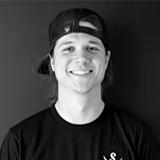By Dave Dennings
Offset printers and inkjet printers alike are challenging screen printers for market share. In order to remain competitive in screen printing today, printers are taking their quality control program to the next level.
In the garment printing market, printers are getting more creative. Buyers of printed garments are demanding something new, fresh and exciting. This has spurred the increased popularity of all kinds of specialty printing.
In the flat stock graphics market, customers are demanding higher resolutions and better color control. And, of course, in both the garment and graphics markets, customers are demanding faster turnarounds and better pricing.
In this increasingly competitive environment, screen printers are attempting to run as efficiently as possible, actively managing every step in their process. Standard operating procedures (SOP's) are one way to help gain control over their process. Costs can then be more accurately estimated and controlled with less overruns. Rejects and remakes can be minimized, while profits and fulfilled deadlines are maximized.
This article focuses on explaining variables in screen making that can be controlled by establishing SOP's. A handy reference guide is included at the end of the article, which offers suggested procedures and tools for each step in the screen making process.
Before effective SOP's can be implemented successfully, one must have a working understanding of the many variables in the process. The operating procedures should then reflect the best possible methods to achieve optimum print quality efficiently. This will directly influence the level of success printers will achieve.
Establishing a controlled process begins by analyzing each step in the process and identifying variables that may influence the quality and consistency of the product.
Secondly, one must understand the impact of each of these variables on the process when they are not kept consistent. When employees have a true understanding of how important their work is to the overall process, they feel more inclined to participate in a new quality control program. They also take more pride in their work, which will improve their overall attitude and productivity.
With this in mind let's take a look at some of the variables in the screen making department and how they may influence your print quality. Along the way we will discuss how to monitor and measure these important variables. Using a logbook to document these measurements will help to monitor the consistency of the process. It may also be helpful when troubleshooting problems.
Click here to read the rest of this article in its entirety.

About the Author
- Phone +1-281-474-9777



